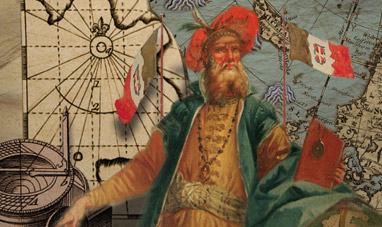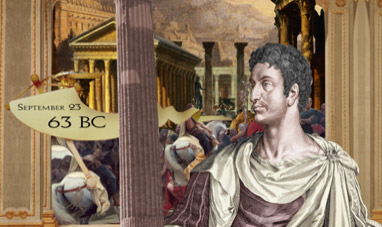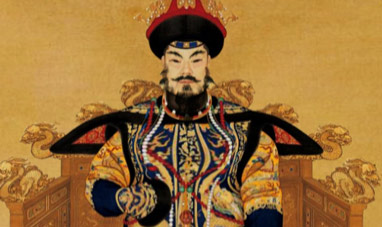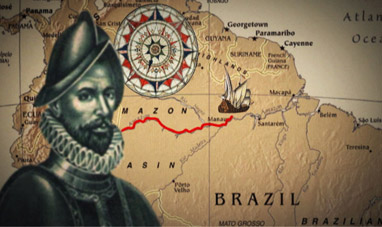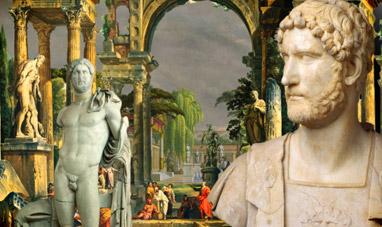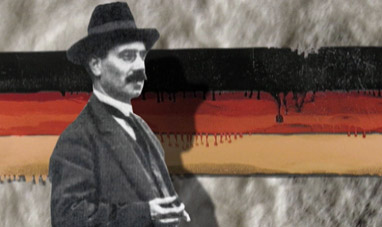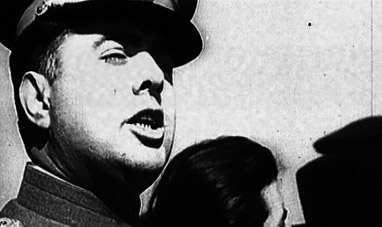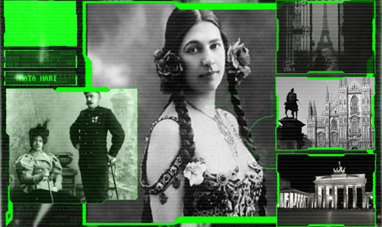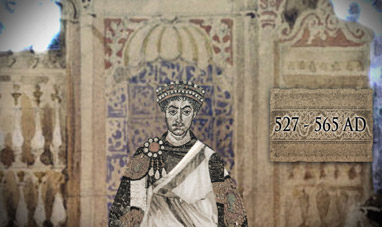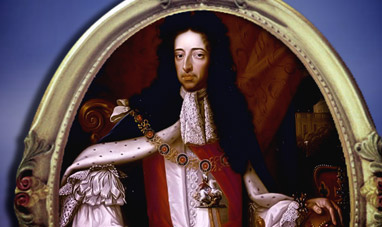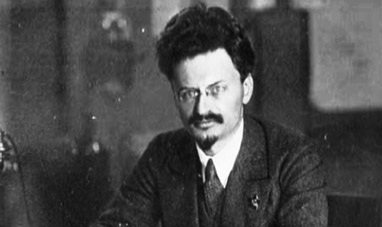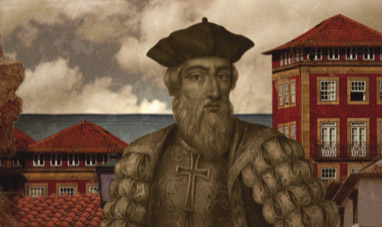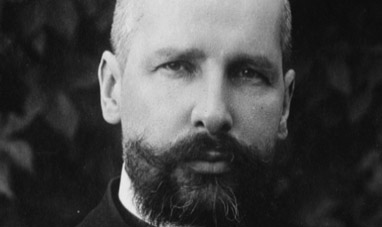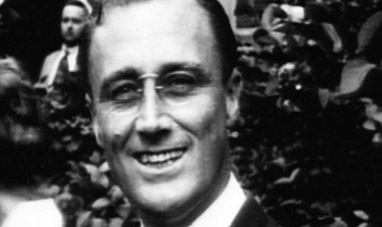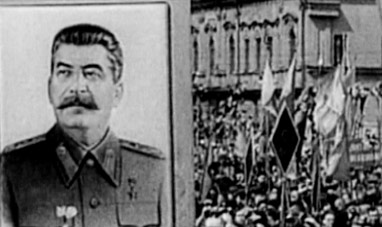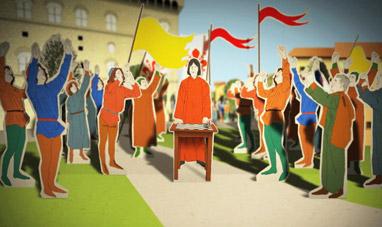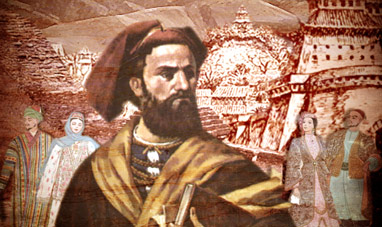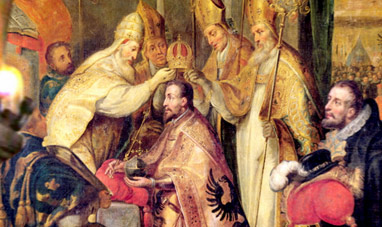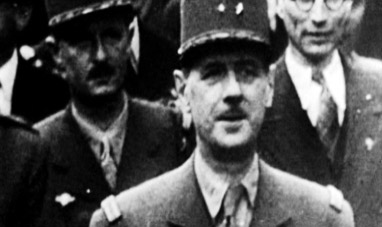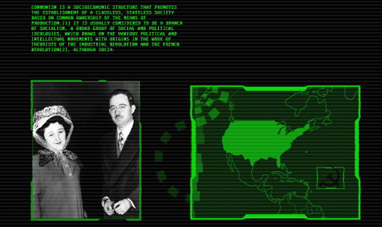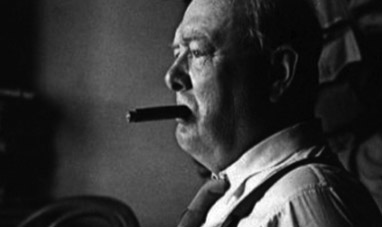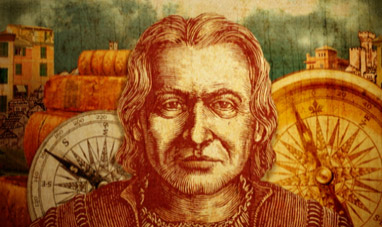An enlightened and courageous monarch, Elizabeth I was the Queen of England between 1558 and 1603. The daughter of Henry VIII, of the Tudor dynasty, and his second wife Anne Boleyn, Elizabeth was born on September 7, 1533 in Greenwich, England. During these years the English throne was hotly contested between Catholic and Protestant branches of the royal family. In 1553 Mary Tudor, a Catholic, became Queen. Fearing that Elizabeth, her protestant stepsister, might take the throne from her, the Queen had Elizabeth imprisoned first in the Tower of London, then in Woodstock Castle. But in 1558 the Queen died. Elizabeth was just 25, and inherited the throne. She was crowned on January 15, 1559.
The first measures Elizabeth adopted were economic: she balanced the national budget and encouraged economic growth by aiding the production of textiles and exports. In just a few years the country began to flourish, a new bourgeoisie of entrepreneurs and traders were born, laying the foundations for strong economic growth over upcoming years. Economic wealth grew, and the country was pervaded by renewed cultural fervor. These were golden years for English Literature, with writers like Marlowe, Shakespeare and Francis Bacon producing renowned works. Another of Elizabeth’s great achievements was securing naval supremacy. During this period, Spain ruled the seas thanks to an immense royal fleet. Elizabeth opted for a different approach, supporting and financing private seamen and corsairs. In return, these sailors split their profits equally with England. Before long, hundreds of ships flying the English flag were sailing seas all over the globe. England had become a naval superpower.
But throughout her reign, Elizabeth was threatened by conspiracies and attempts to dethrone her. In particular, Pope Pius V wished to place Mary Stuart, the Queen of Scots, on the throne of England. Stuart was Elizabeth’s cousin and a member of the house of Tudor, but unlike Elizabeth, Mary was a fervent catholic. Determined to safeguard her authority, Elizabeth resorted to the same measures she herself had been subjected to, imprisoning Mary Stuart for 18 years. Finally, in 1587, Elizabeth uncovered a conspiracy Mary Stuart had planned against her, and had her cousin beheaded. In the meantime Catholic Spain, led by Philip II, attacked England. But Elizabeth’s fleet defeated Spain’s invincible Armada in the English Channel. From this point on, England was an economic, maritime and colonial power to be reckoned with. Elizabeth was a warmly loved monarch, and venerated by her people. Her image was skillfully crafted to communicate power. Both abstract and solemn, Elizabeth seemed almost like a divine figure. Elizabeth, the Virgin Queen, honored her peoples’ love by devoting her entire existence to England, never marrying and reigning for 45 years. Elizabeth I died on March 24, 1603. She was 70. Under her guidance, England had become a world power.
The first measures Elizabeth adopted were economic: she balanced the national budget and encouraged economic growth by aiding the production of textiles and exports. In just a few years the country began to flourish, a new bourgeoisie of entrepreneurs and traders were born, laying the foundations for strong economic growth over upcoming years. Economic wealth grew, and the country was pervaded by renewed cultural fervor. These were golden years for English Literature, with writers like Marlowe, Shakespeare and Francis Bacon producing renowned works. Another of Elizabeth’s great achievements was securing naval supremacy. During this period, Spain ruled the seas thanks to an immense royal fleet. Elizabeth opted for a different approach, supporting and financing private seamen and corsairs. In return, these sailors split their profits equally with England. Before long, hundreds of ships flying the English flag were sailing seas all over the globe. England had become a naval superpower.
But throughout her reign, Elizabeth was threatened by conspiracies and attempts to dethrone her. In particular, Pope Pius V wished to place Mary Stuart, the Queen of Scots, on the throne of England. Stuart was Elizabeth’s cousin and a member of the house of Tudor, but unlike Elizabeth, Mary was a fervent catholic. Determined to safeguard her authority, Elizabeth resorted to the same measures she herself had been subjected to, imprisoning Mary Stuart for 18 years. Finally, in 1587, Elizabeth uncovered a conspiracy Mary Stuart had planned against her, and had her cousin beheaded. In the meantime Catholic Spain, led by Philip II, attacked England. But Elizabeth’s fleet defeated Spain’s invincible Armada in the English Channel. From this point on, England was an economic, maritime and colonial power to be reckoned with. Elizabeth was a warmly loved monarch, and venerated by her people. Her image was skillfully crafted to communicate power. Both abstract and solemn, Elizabeth seemed almost like a divine figure. Elizabeth, the Virgin Queen, honored her peoples’ love by devoting her entire existence to England, never marrying and reigning for 45 years. Elizabeth I died on March 24, 1603. She was 70. Under her guidance, England had become a world power.

